
I like to work in chunks, or series, or focuses. Whatever you want to call it, I like to work on the same thing for a while to get a better understanding of it, quicker. This summer, or general warm weather season, I chose to concentrate on landscape painting.
You learn many things when concentrating on one subject continuously. I was looking for what I would learn about technically painting landscapes, how my supplies may change, and even my style. I wasn’t anticipating how it all would influence my overall approach to painting everything.
Technical Aspects of Landscape Painting
The main reason I chose to concentrate on landscapes was because I wanted to get better at them. Makes sense right? To like my results more, I needed to put in the time to practice as well as pursue professional instruction to fill in the gaps.
Practicing the same subject multiple times, and really paying attention to what you’re doing and how it’s coming out is one of my favorite ways to learn. If you’ve ever seen one of my posts about sketchbook work, this isn’t a surprise. The key is trying different things each time and not painting exactly the same thing, the same way, every time. What if you add just a bit more water? What if you stop painting just before you try to “fix” something? These inquiries often lead to unexpected surprises and a new facet of understanding.
When I can’t find a solution to a deficiency on my own, I don’t hesitate to seek out someone who excels at that and learn from them.
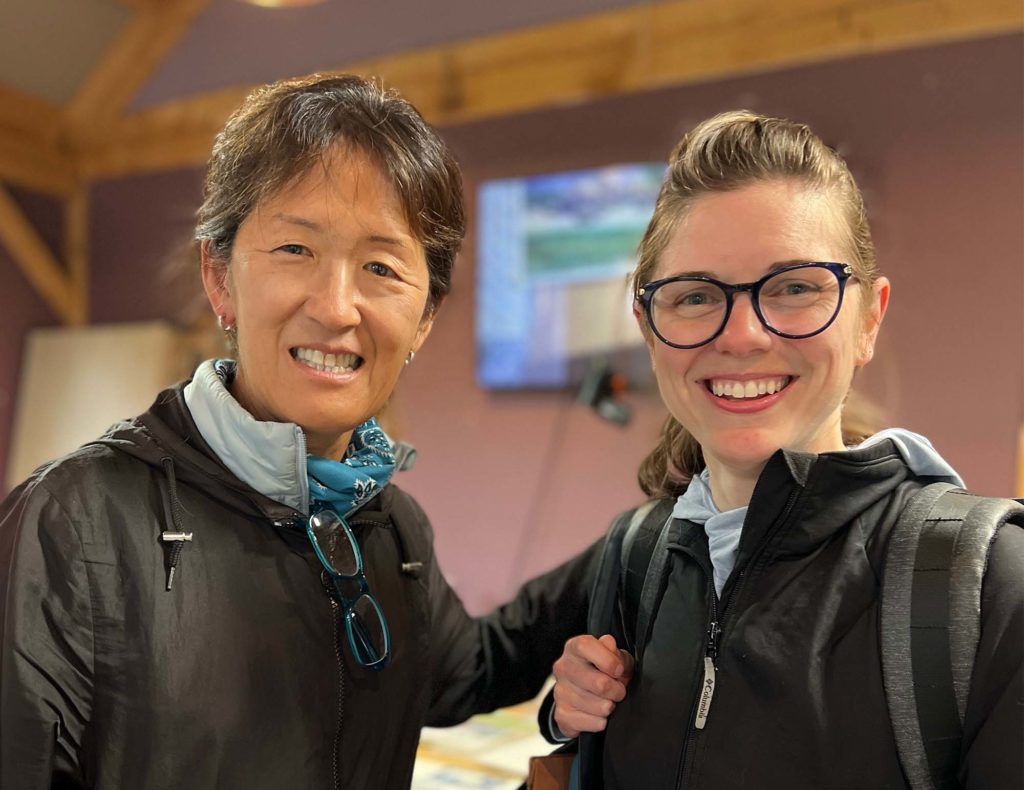
This summer I took multiple workshops from top professionals in the field and not only walked away with a deeper understanding, but had a lot of fun at the same time. Sometimes the best part of attending a workshop is painting alongside others that are as passionate about painting!
Immersive Plein Air Workshop
The 4-day plein air workshop at the Landgrove Inn in Vermont with Keiko Tanabe was my favorite, as 4 full days of almost exclusively plein air painting was incredible inspiring. Watching an internationally renowned artist work freely and then jumping into your own work with their guidance is one of the most supportive experiences of artistic growth.
What did I learn? It doesn’t sound incredibly impressive in words but: just jump in, trust my gut, and not fiddle. The inner feeling and results of this new understanding is far more profound than the words to describe it. Instructor demos provide small philosophies, simpler applications to suggest landscape elements, and how to not let the scene overwhelm you. This is further supported by just “forcing”yourself to set up, paint on the spot, and learn from mistakes over 4 days. This led to some of my favorite landscape paintings I’ve ever done, at a size I’ve never attempted before.


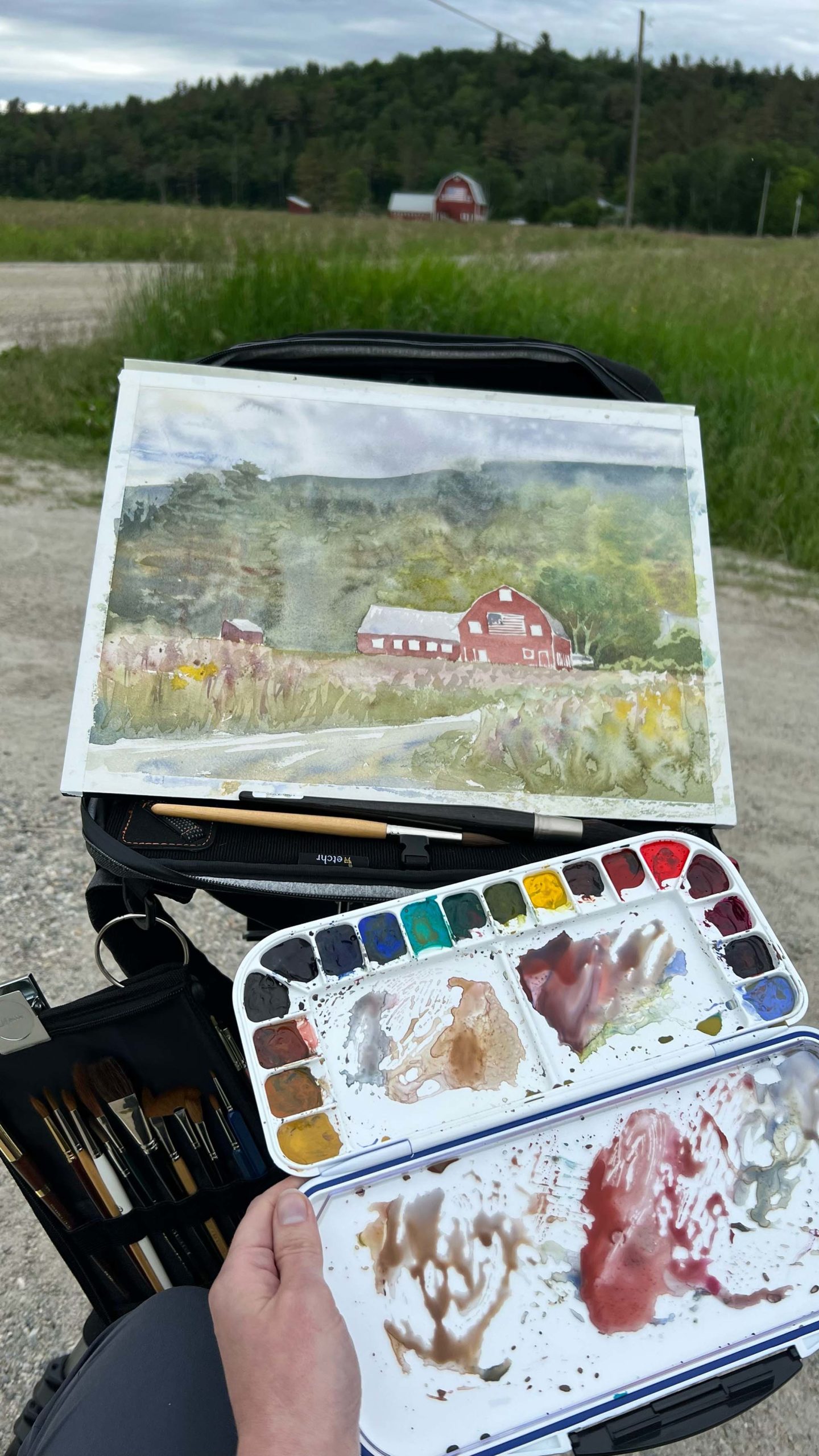
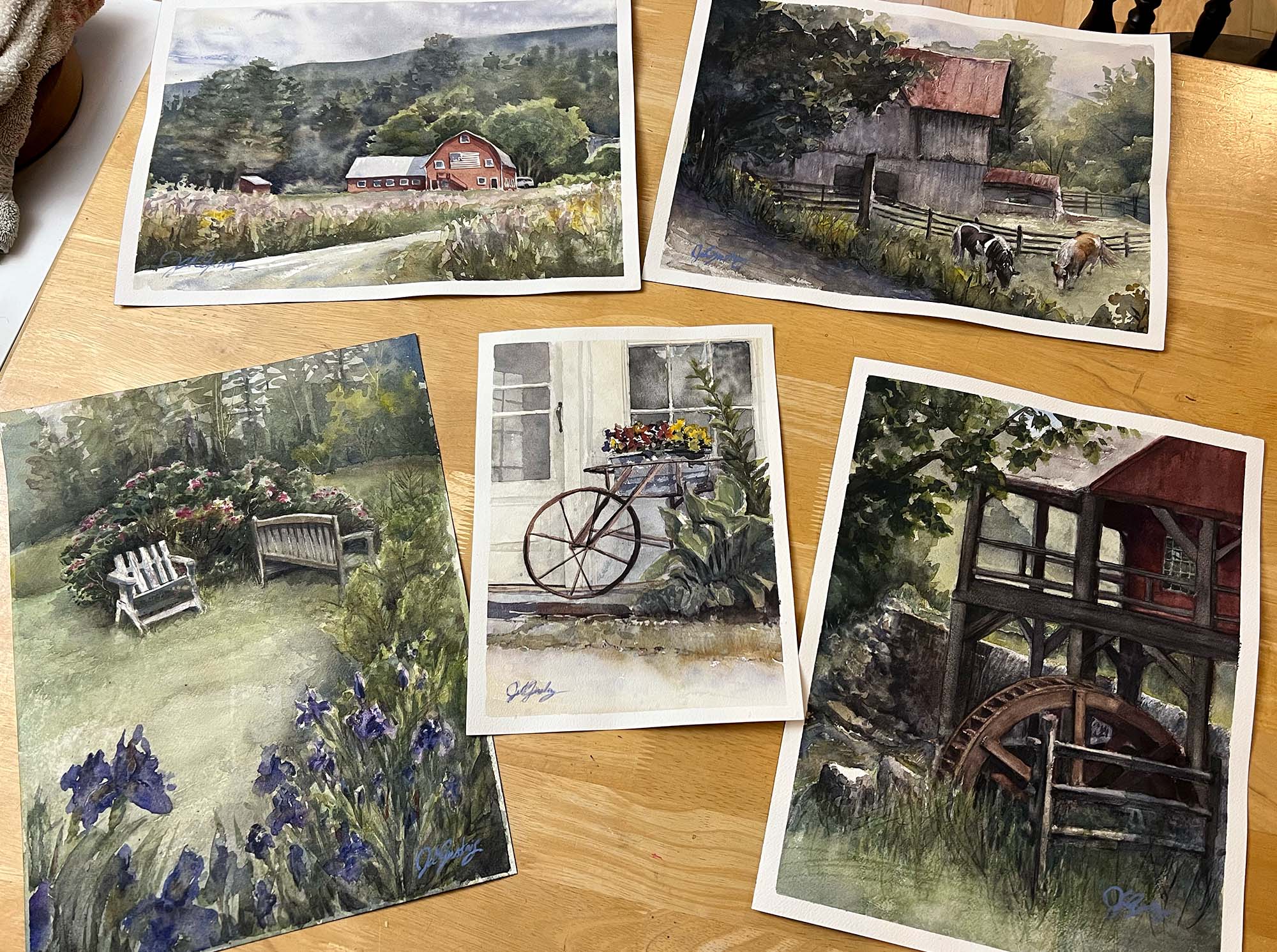
Supplies for Landscape Painting
This is a little bit of a summary of the posts here from the last few months. The supplies I turn to now for landscape painting depend on a few variables. Am I painting outside or in the studio? Is it a big painting, or a small sketch? Does it need to be light and portable or super stable? I’ve cultivated a few different kits for the different ways I can paint landscapes.
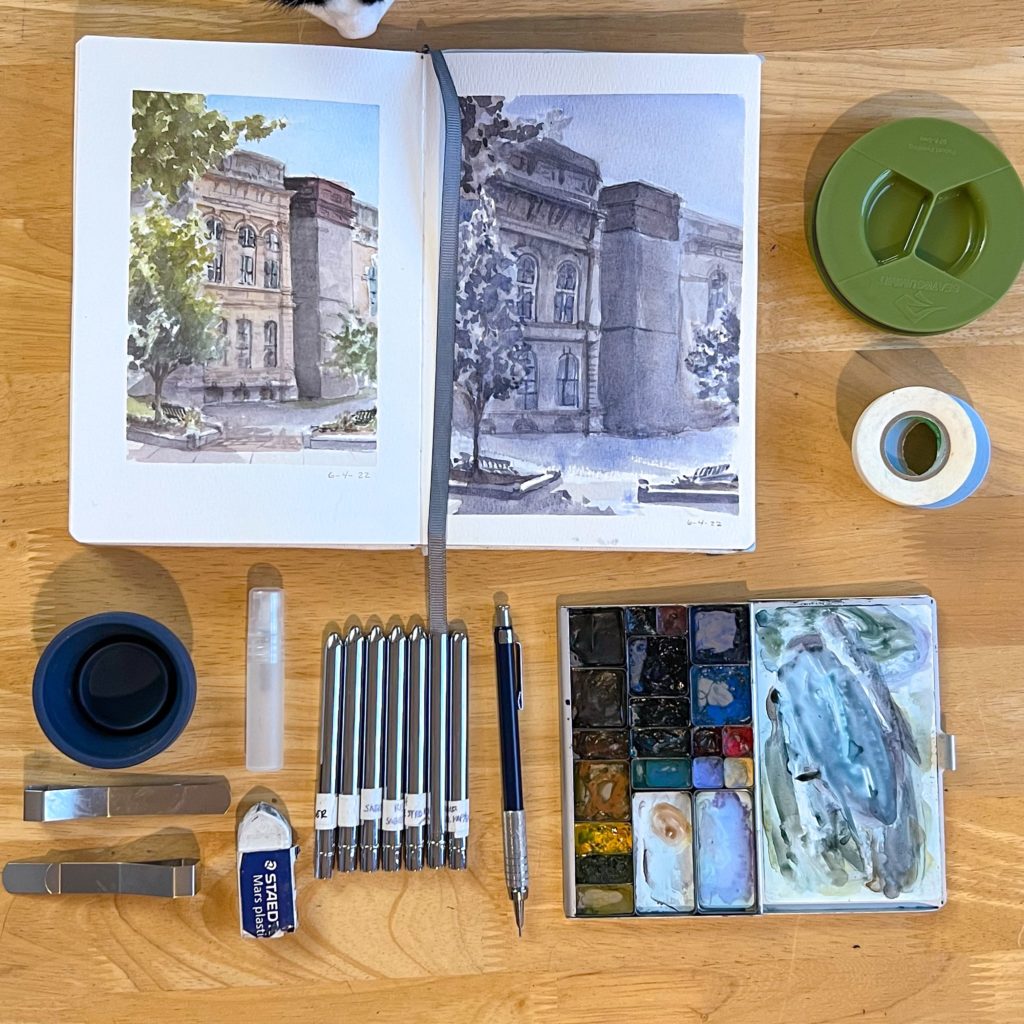
Small Kit
My small portable kit is probably the most used, and most fun. I wrote about it earlier in the summer and you can read all about it here. I use this not only for small sketches outside and on hikes, but also if I want a quick set up at the coffee table in the living room. It’s very convenient.
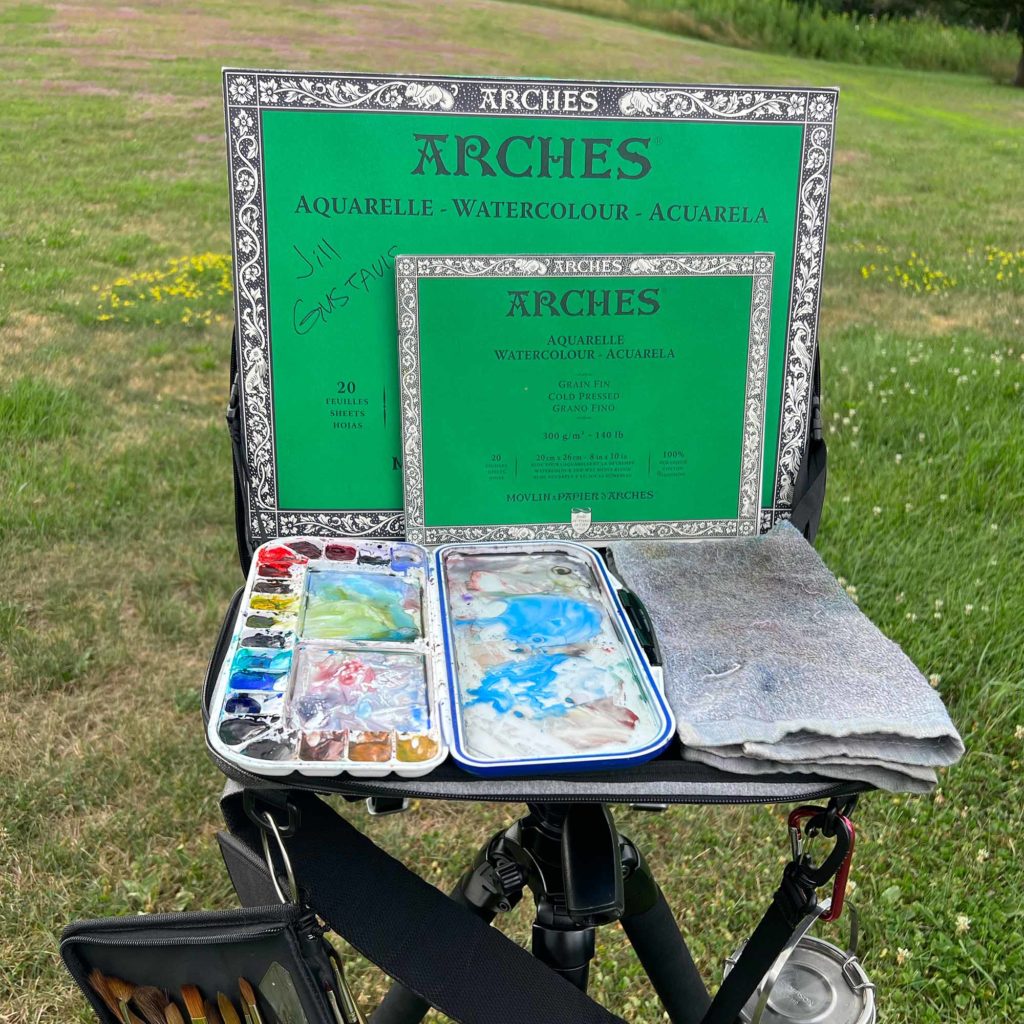
Large Kit
The watercolor plein air setup from the last post is solely for painting mid and large sized pieces outside, or, if I need a freestanding setup for a class. This second use will change once I add a portable easel, but this works for now. For plein air it’s great for its stability, but the weight could be a detriment for some. Read more about it here.
Studio Set Up
The third option is for studio work. A larger covered palette, paper taped to a board, and an assortment of brushes depending on the scale of the paper. Nothing too crazy here, and perhaps I’ll expand on it in the future as I continue to refine my new-ish studio space.
Specific changes mostly include larger everything. Larger mops and wash brushes cover paper faster, larger paper requires larger puddles of paint that benefit from staying moist from frequent use. It makes sense. Landscapes can be large scenes and some benefit from breathing over a larger area. I still plan on continuing small sketches, but it’s nice to not fear a large painting when needed.
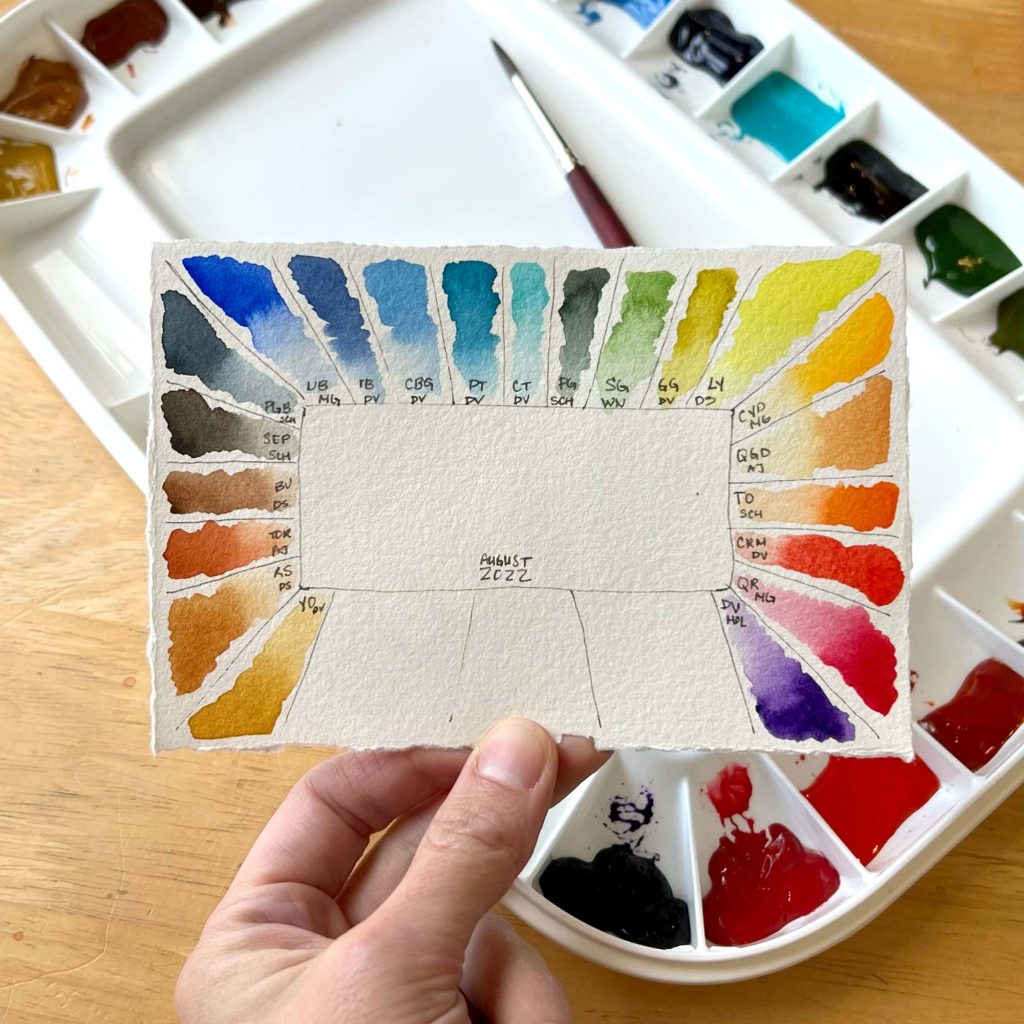
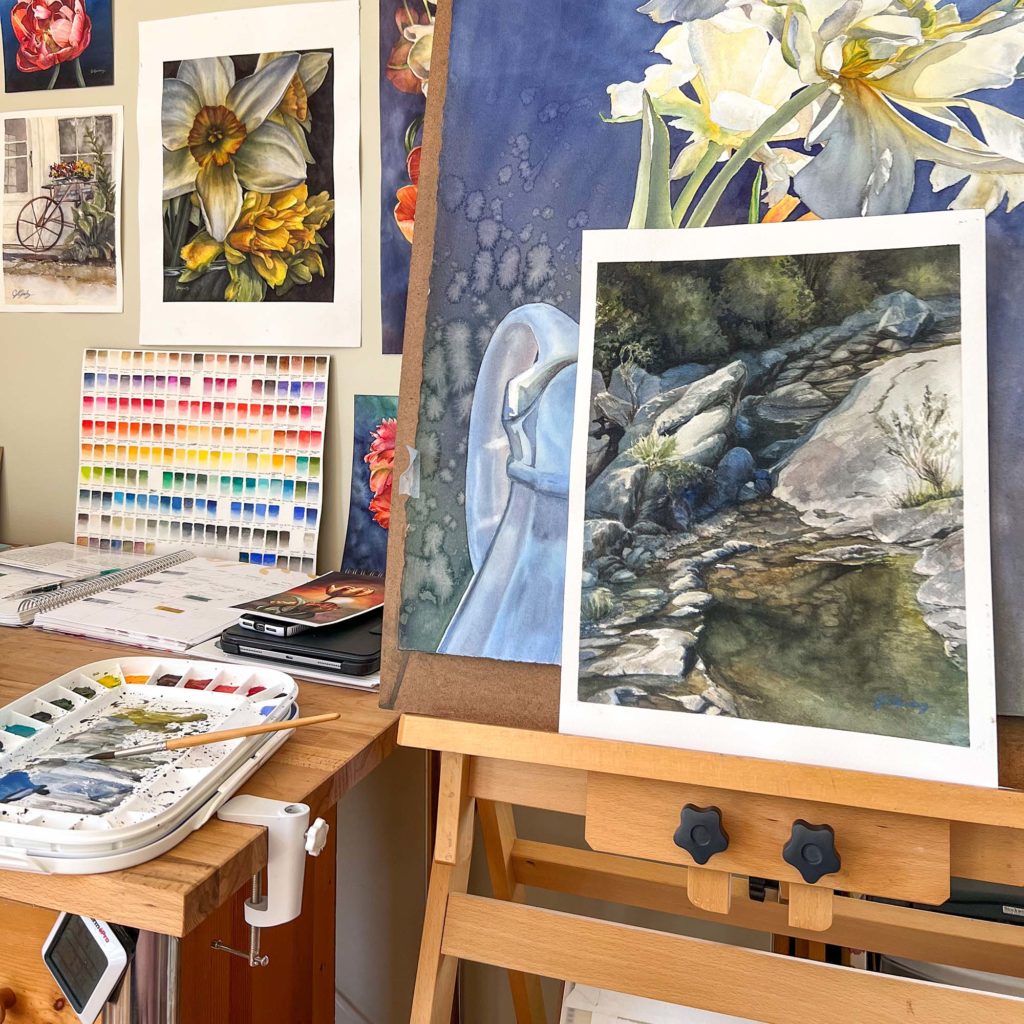
How Landscape Painting Influenced my Philosophy
As we enter colder weather, I find myself not only with a new appreciation for the landscape genre of painting, but also a new approach to everything in my art practice. One major aspect I’ve taken away from this summer’s landscape painting is how it feels to learn for the sake of learning. That surge of joy as time practicing pays off in obvious improvement. Observing what your focus is made of, how it works, and most importantly, how it feels is also a surefire way to appreciating it more as well.

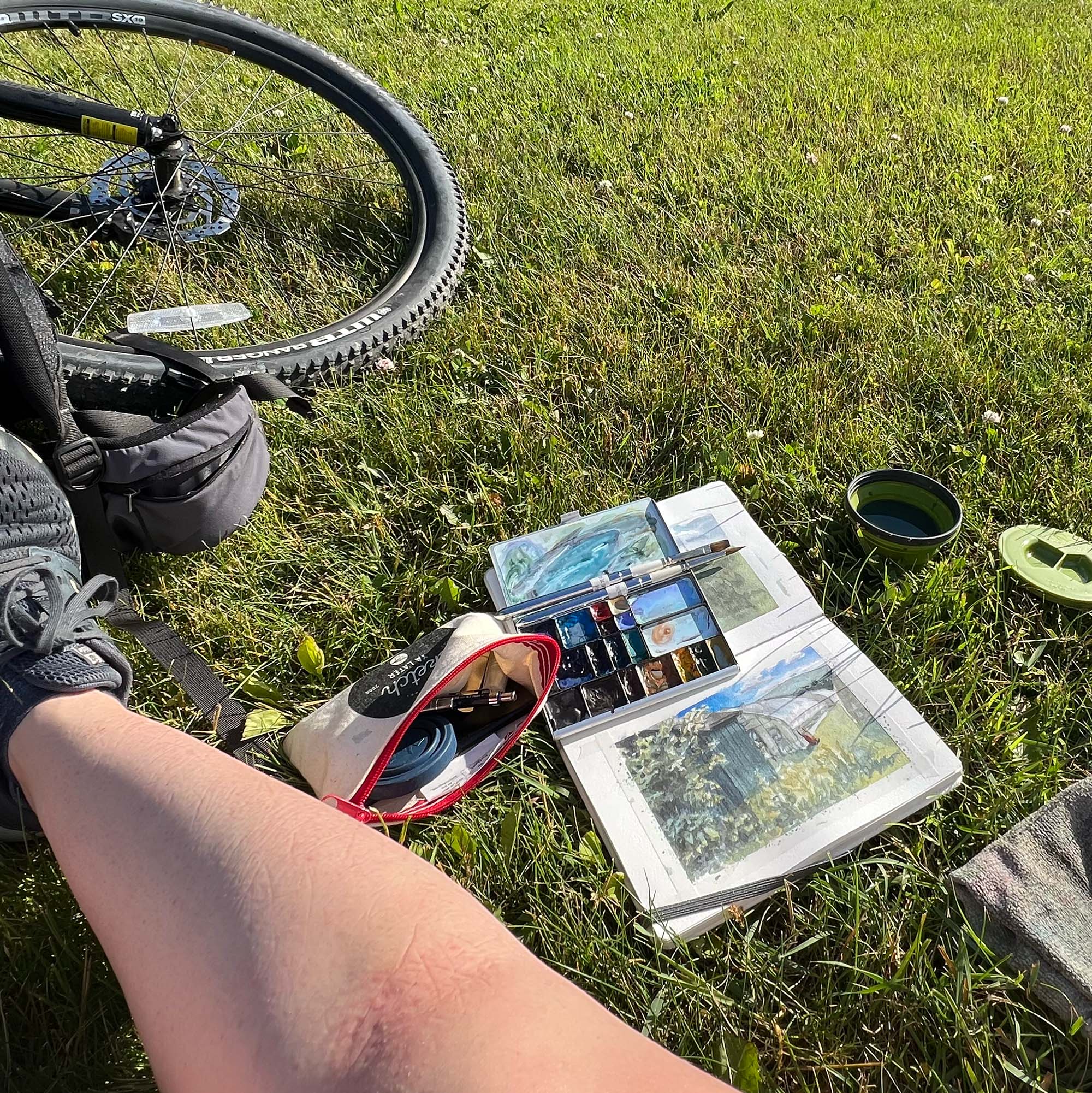
Making landscape painting a habit has made appreciating the landscape a habit. Not that I didn’t love my surroundings already, but I’d seen them so much clearer and more in depth the last few months. Trying to take my painting kit on hikes meant I went on more hikes and enjoyed more amazing summit views. Wanting to take my kit around my neighborhood meant I rode my bike around to local spots to paint and got to know the neighborhood more. It really was a practice that gave back much more than a few more paintings.
Conclusion
How does my summer of landscape painting influence how I move forward from here? It doesn’t mean only working on landscapes, if that’s what you think. I technically work on everything all the time. I choose to focus on something more heavily every once in a while. What I will take into my next pursuit is that spark from learning more about something I find challenging.
Technically, I’ve actually already started. If you’ve been following along on Instagram, my new focus is back to drawing to ultimately improve my paintings. Correcting perspective, improving value, and leaving room for new insight, however that may appear.

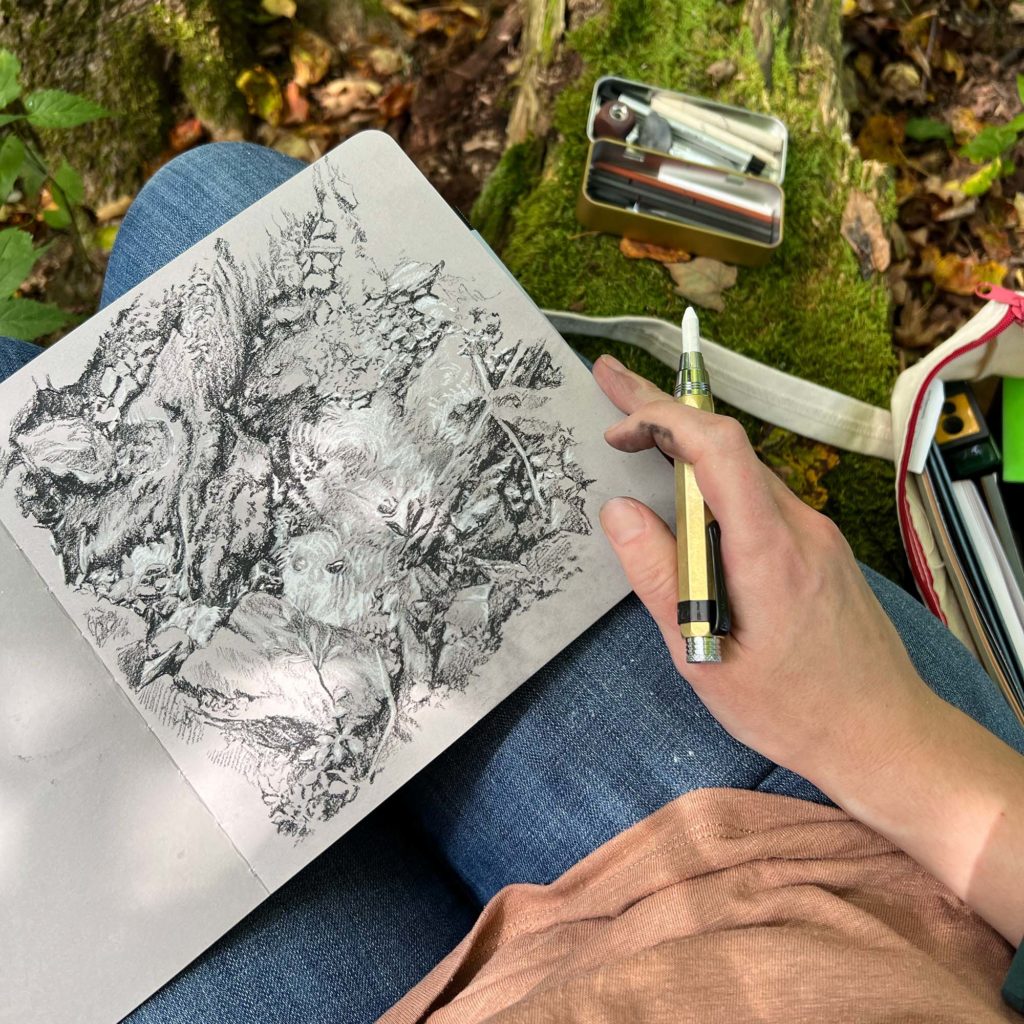
I’ll share what I find in time. But until then, thank you for reading my reflections on this summer’s landscape painting!
-Jill